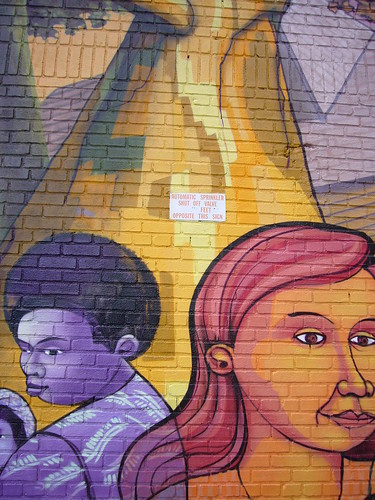I was asked recently to write a short piece about an intellectual curiousity. This is what I wrote:
In between my undergraduate degrees in Sociology and Business Management, I spent quite a bit of time taking studio photography and photographic history classes. The photos without people were topically of the most interest to me, although I disliked traditional Western landscape photography - photos of mountain ranges and the red rocks of Sedona, for example. My favorite subject was photos of bedrooms, taken without the resident(s). To me, this was an authentic portrait.
Since 1998, I've been interested in abandoned buildings and locations. Any kind of abandoned building: sanitariums, hospitals, courthouses, train stations, even bridges that are off of the beaten path. Peeling paint, rusted ironwork, holes in the floor, and debris-filled rooms have all looked beautiful in a photograph.
Entering abandoned locations is called urban exploration (UE). Wikipedia's definition of UE is "the examination of the normally unseen or off-limits parts of human civilization."
Some urban explorers like the thrill of infiltrating a space in which they aren't allowed to enter, while others enjoy the physical challenge of entering such a site. UE photographers are capturing images of a location way past its prime: mental hospitals twenty years after the last patient left or a subway station that hasn't housed a subway car in fifty years. Is the fascination in the aesthetic, the lack of permission, or is it something else? Probably each UE photographer has a different philosophy. To me, UE photography is portraiture of a location captured during a transitive period with respect to the location's memory and its current state. The space's history is not completely separate from its involvement with people, but is divorced from that activity and stands on its own.
One of my photography teachers received a good amount of grant money to rephotograph photos from the early 1900s. In other words, he went to the same place at the same time of the year, decades later, and took the same picture. Sometimes the image looked the same - same mountaintop, same river, etc. But often there was evidence of man in the second photograph that wasn't present in the first - maybe a telephone wire, a car, or a dwelling.
I was traveling the Viking Trail in Newfoundland last year, and the photos that I enjoyed taking were those of a moose running, as seen through the passenger's window of a car; oil on a hiking trail; and a weathered bench in a forest of burnt trees. To me, today's urban exploration photography is last generation's rephotographing of the Western landscape. The abandoned building is not just an aesthetic perception. The musky smell, wet air, and the layers of muted color among decay are aesthetically appealing on some level, but it is the unspoken intellectual response that fascinates me and what I think about when looking at a photo of an abandoned building or exploring one with friends.
Monday, September 24, 2007
Subscribe to:
Post Comments (Atom)

No comments:
Post a Comment